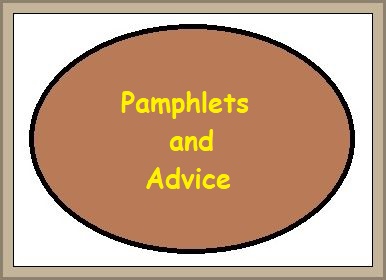
LAWN MOWING TIPS
____________________Start of Day
1. Thoroughly clean power equipment
2. Tighten loose bolts and make simple repairs. Grease and oil power edger arm
3. Clean air filters. Check oil in mowers and power edger.
4. Sharpen mower blades. Test for blade alignment. Disconnect the spark plug, mark the blade tip using your thumb, and spin the blade 180 degrees. The blade should just brush your thumb - within 1/8 inch. If it doesn't, either the blade or the motor crankshaft is bent.
Do not use power equipment anywhere it poses a hazard to people, plants, or property. Avoid rocky or gravelly areas, and steep slopes. A thrown rock can cause serious injury to unprotected persons 50 feet away.
See our equipment tips pamphlet for further advice on using power lawn equipment,
especially how to mulch clippings and precise use of string trimmer:
equipment tips
____________________
A Mowing Procedure
1. Use the string trimmer where the mower is unable to go; trim grass high, at moderate rpm, along walls and fences, and around all beds. Be careful not to cut down plantings in beds.
Make sure the string trimmer is not vibrating and does not lug at full power. If it does, check the string length. The string should be kept trimmed at about 5 to 6 inch length. Otherwise it will not perform well and may damage the motor.
Reduce RPM around tree trunks to avoid injuring them.
Do not scalp down edges along flower beds.
Do not "mow" embankments with the string trimmer unless mowing is too dangerous.
2. Edge driveways and walks, and define beds, using the power edger. Set the edger blade about 1 inch below the sidewalk. Lift the rear wheels to negotiate curves. Don't grind into concrete, just barely brush against it. If the edger lacks power, check the belt for wear.
A stick-type power edger can be used in place of the bulkier wheel-type power edger - they are more versatile, but can be tiresome for larger edging jobs.
A star-shaped blade is safer to use than the linear blades, as they do not throw rock as much.
3. Mow at the lowest setting at which the mower functions properly. The mower should cut cleanly without plugging up, and shouldn't drag from cutting too low. If grass is wet or long, plan on mowing twice over, lowering the setting slightly on the second pass.
Watch out for rocks and pipes. Don't mow going backwards.
Don't set the front more than one notch different from the back.
As you mow, check that the mower is cutting grass evenly
Mow banks at a high setting. Start at the top, traverse back and forth across the bank, working your way down. The mower itself can be used to help balance and support you. Don't stand downside of the mower.
4. Blow off sidewalks, paths, patio's and street, using the lowest RPM practical. Blow grass clippings that are visible on lawn or in flower beds to disperse them. Try to always keep moving with the blower, working your way around the job. Blow debris toward a point where it can be dispersed into the lawn or beds.
5. Inspect and make sure the job is satisfactory before putting equipment away.
____________________
Problems With Equipment
Note the following are general comments. Always follow manufacturers instructions.
__________
Mowers and edgers
check gas and oil before starting
clean air filter and dry off if dirty
make sure throttle cable is functioning
Shut off throttle and pull 3 times. Then give throttle and pull.
If no start, check the spark plug. If dirty, clean and retry.
If all else fails, try a new plug.
__________
Whip and blower (2 cycle motors)
USE 2-CYCLE GAS ONLY. Use of improper mixture will ruin motor.
Check Kill switch.
Prime and discharge excess fuel
Give it throttle.
Choke and pull until it sputters, then open choke and pull
If no start, check air filter, throttle and plug as above
![]()